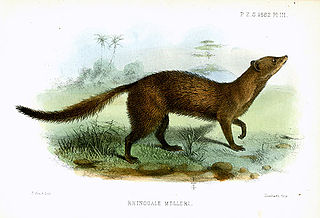Related Research Articles

Dar es Salaam is the largest city and financial hub of Tanzania. It is also the capital of the Dar es Salaam Region. With a population of over eight million people, Dar es Salaam is the largest city in East Africa and the sixth-largest in Africa. Located on the Swahili coast, Dar es Salaam is an important economic center and one of the fastest-growing cities in the world.

Tanzania, officially the United Republic of Tanzania, is a country in East Africa within the African Great Lakes region. It borders Uganda to the north; Kenya to the northeast; the Indian Ocean to the east; Mozambique and Malawi to the south; Zambia to the southwest; and Rwanda, Burundi, and the Democratic Republic of the Congo to the west. Mount Kilimanjaro, Africa's highest mountain, is in northeastern Tanzania. According to the 2022 national census, Tanzania has a population of nearly 62 million, making it the most populous country located entirely south of the equator.

Zanzibar is an insular semi-autonomous region which united with Tanganyika in 1964 to form the United Republic of Tanzania. It is an archipelago in the Indian Ocean, 25–50 km (16–31 mi) off the coast of the African mainland, and consists of many small islands and two large ones: Unguja and Pemba Island. The capital is Zanzibar City, located on the island of Unguja. Its historic centre, Stone Town, is a World Heritage Site.
Meru may refer to:

Darkling beetle is the common name for members of the beetle family Tenebrionidae, comprising over 20,000 species in a cosmopolitan distribution.
The Udzungwa forest partridge, also known as the Udzungwa partridge, is a small, approximately 29 centimetres (11 in) long, boldly barred, brownish partridge with rufous face, grey underparts, olive-brown crown and upperparts. It has a red bill, brown iris and yellow legs. Both sexes are similar.

Meller's mongoose is a small brown mongoose native to savannas and woodlands of southeastern Africa. It is the only member of the genus Rhynchogale. The Meller's mongoose lives alone and is active at night, feeding on termites or other small insects and animals. While somewhat rare, it is adaptable and faces no serious threats. It is a member of the mongoose family (Herpestidae), a group of fox-like animals native to Asia, southern Europe, and Africa.

The bark mantises and ground mantises are praying mantids now placed in the family Eremiaphilidae that are native to the Afrotropics. They are generally light brown but more silvery on the wings. The wings are attractively reticulated, and the veins may be mottled dark and pale. The head is wider than the pronotum, which is rounded anteriorly, and doesn't overlap with the rear of the head. The pronotum is depressed, with its sides more or less parallel, and only a weak supra-coxal bulge is present. The anterior tibia are flattened and greatly expanded longitudinally, and the tibial claw does not fit into a pit between the 1st and 2nd external spines of the anterior femora, as in a few mantis groups.

Gymnosiphon (yellowseed) is a genus of monocotyledonous flowering plants from the yam order. Like most of the other members of the family in which the plant is placed (Burmanniaceae), Gymnosiphon is entirely myco-heterotrophic genus that does not contain chlorophyll and respectively does not perform photosynthesis.
The Usambara double-collared sunbird is a species of bird in the family Nectariniidae. It is a resident breeder in the tropical moist montane forests of southeast Kenya and Tanga Region of Tanzania.

Termitotroginae is a monotypic subfamily of the family Scarabaeidae, the scarab beetles. The only genus in the subfamily is Termititrox. A second genus, Aphodiocopris, Arrow, 1920, has been synonymised with Termitotrox. All known members of this subfamily are tiny, blind and flightless, and dwell within the fungal gardens of colonies of species of termite in Africa or tropical Asia.
Afrotridactylus is a genus of African pygmy mole crickets, which contains the following species:
- Afrotridactylus ghesquiereiChopard, 1934
- Afrotridactylus koenigsmanniGünther, 1994
- Afrotridactylus madecassus(Saussure, 1896) - type species
- Afrotridactylus meridianusGünther, 1994
- Afrotridactylus pallidus(Chopard & Callan, 1956)
- Afrotridactylus spiralatusGünther, 1994
- Afrotridactylus usambaricus(Sjöstedt, 1910) – African sandhopper
The African sandhopper is a species of pygmy mole cricket found throughout Africa south of the Sahara Desert. It prefers sandy or muddy open river banks. It has been recorded from Niokolo-Koba National Park in Senegal.

Idactus is a genus of longhorn beetles of the subfamily Lamiinae.
Pseudocorus usambaricus is a species of beetle in the family Cerambycidae, and the only species in the genus Pseudocorus. It was described by Breuning in 1960.

Novius is a genus of ladybird beetles belonging to the family Coccinellidae, and the sole member of the tribe Noviini. The genus as presently defined contains over 70 species, most of which were formerly placed in the genera Rodolia and Anovia, but after decades of debate, both of these genera are now considered to be junior synonyms of Novius.

Coptops aedificator, the Albizia long-horned beetle, is a species of beetle in the family Cerambycidae. It was described by Johan Christian Fabricius in 1792, originally under the genus Lamia. It is known from Djibouti, Tanzania, the Democratic Republic of the Congo, Ethiopia, Oman, Gabon, India, Madagascar, Malawi, Namibia, Nigeria, Saudi Arabia, the Ivory Coast, Cameroon, Senegal, South Africa, Seychelles, Mauritius, Sri Lanka, and Zambia. It was also introduced into Cape Verde, Hawaii, and Taiwan. It feeds on Theobroma cacao and several Coffea species, including C. arabica, C. canephora, and C. liberica var. dewevrei.
The Usambara blotched blind-snake is a species of snake in the Typhlopidae family.
Fissidens usambaricus is a species of moss belonging to the family Fissidentaceae. It is known from Sub-Saharan Africa. In Angola, it has been reported to grow in lowland rainforests.

Thelotornis usambaricus, the Usambara vine snake, is a species of snake of the family Colubridae.
References
- ↑ Biolib.cz - Baraeomimus usambaricus. Retrieved on 8 September 2014.
- ↑ "Baraeomimus of Tanzania". lamiinae.org. Retrieved 2022-05-26.